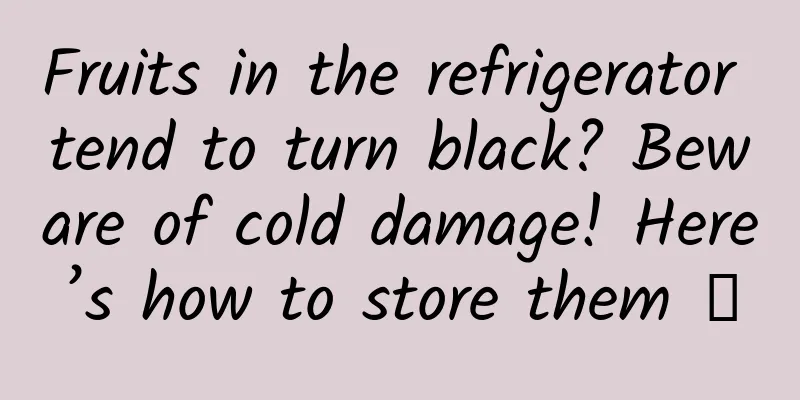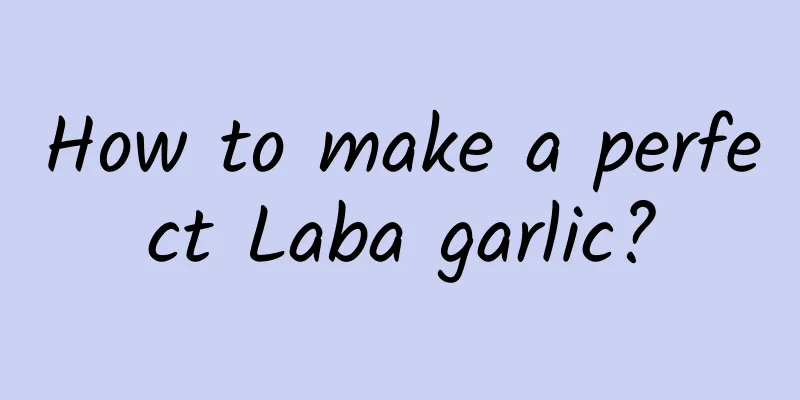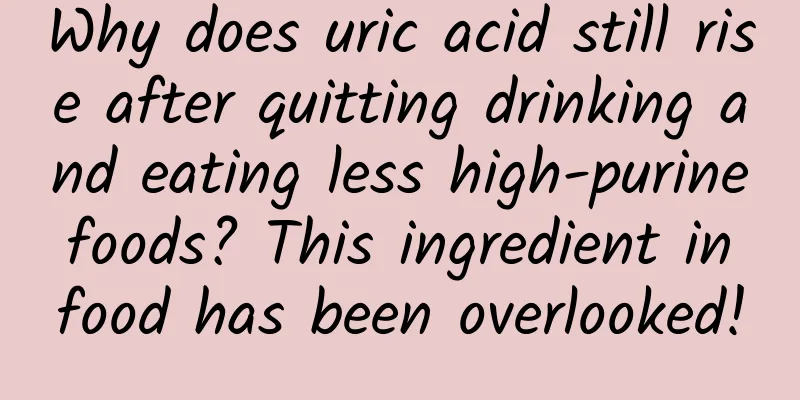Fruits in the refrigerator tend to turn black? Beware of cold damage! Here’s how to store them →

|
In daily life, we often put the fruits we buy home into the refrigerator, such as tropical fruits such as bananas, lychees, dragon fruits, mangoes, longans, papayas, rambutans, subtropical fruits such as loquats, temperate fruits such as peaches and pears. However, after a few days, the skin will turn black, become concave, and have dark-brown spots. The flesh will also turn black and become cottony and rotten. This is a sign that the fruit is damaged by low temperature. Image source: Qianku.com Some vegetables are not suitable for long-term storage in the refrigerator. Green peppers stored in the refrigerator for a long time will turn black, soften, change taste and other low-temperature damage. Tomatoes in an environment with too low temperature will partially or completely become waterlogged and rotten, and brown round spots will appear. These low-temperature injuries are called chilling damage. Venus Golden Apples damaged by cold weather, Image source: Duan Yuquan Mangoes damaged by cold weather. Image source: Zhang XR 1. What is chilling damage? Low temperature storage is widely used to preserve various fruits and vegetables, and is one of the most effective storage methods. However, inappropriate low temperature storage conditions can lead to physiological dysfunction of fruits and eventually cause chilling injury. Chilling injury refers to the phenomenon that cold-sensitive plants or plant organs are exposed to a temperature above the freezing point of the tissue that is not suitable for storage, causing physiological metabolic disorders, which is mainly manifested in the shrinkage, dents, lignification of the fruit skin, browning of the flesh, etc. Chilling injury can cause damage to the internal structure of fruits and vegetables, loss of nutrients, and reduction of disease resistance and storage resistance, which in turn leads to the deterioration and rot of fruits and vegetables. The occurrence mechanism of chilling injury is generally believed to be caused by damage to the plant cell membrane. The plant cell membrane undergoes membrane lipid phase transition at chilling temperature, which in turn causes changes in cell membrane permeability and changes in the activity of a series of enzymes related to the cell membrane. Polyphenols in the plant body come into contact with polyphenol oxidase to undergo enzymatic browning, causing browning of the flesh and peel, and leading to cell metabolic disorders and functional disorders. The plant's own disease resistance and antioxidant capacity decrease, and the fruit quality deteriorates. Some fruits and vegetables that originate from tropical and subtropical areas, such as bananas, citrus, tomatoes, cucumbers, peppers, etc., are particularly sensitive to low temperatures because their systems have been in a high temperature and humid environment for a long time. If stored at low temperatures, they are very susceptible to chilling damage. The temperature at which different types of fruits and vegetables suffer chilling damage varies. The optimum storage temperature for green mangoes, bananas, etc. is 10-12°C. Chilling damage will occur when the ambient temperature is below 10°C. If the tissue is briefly cooled and then warmed up, normal metabolism can be restored without causing damage. If the tissue is cooled for a long time, the tissue will collapse and the cells will disintegrate, which will lead to the appearance of chilling damage symptoms. About one-third of the fruits sold in my country are cold-sensitive. 2. How to prevent cold damage? The occurrence and severity of chilling injury depends on the cold sensitivity of the fruit, storage temperature, and duration of chilling injury. In addition to the storage environment temperature, the occurrence of chilling injury to fruits and vegetables is also related to the type, variety, origin, maturity of fruits and vegetables, humidity of the storage environment, gas composition, etc. In the commercial storage of fruits and vegetables, there are corresponding temperature, humidity and other processing requirements for fruits of different origins, times, and maturity. The main methods we use to prevent chilling injury in actual production are: 1. Storage temperature adjustment Different fruits have different critical storage temperatures. If the temperature is below the critical temperature, chilling injury symptoms will appear. If the temperature is just below the critical temperature, it will take a relatively long time for chilling injury symptoms to appear. Therefore, the best way to prevent chilling injury is to understand the critical chilling injury temperature of fruits and not to place fruits in an environment below the critical temperature. Placing fruits in an environment slightly above the critical chilling injury temperature for a period of time can also prevent chilling injury. Adopting a gradient cooling method to reduce the storage temperature of duck pears from 25°C to 0°C within 30 days can reduce the occurrence of duck pear black heart disease. 2. Humidity Control 100% relative humidity can alleviate chilling injury symptoms, but too low a relative humidity will aggravate chilling injury symptoms. Packaging with plastic bags can alleviate chilling injury symptoms, and the main reason may be the high humidity in the bag. In fact, high humidity cannot alleviate the damage to cells caused by low temperature. High humidity is not the direct cause of the reduction of chilling injury. It is just that the high humidity of the environment reduces the transpiration of the product. 3. Gas conditioning Controlled atmosphere storage is a storage method that reduces the concentration of oxygen in the storage environment and increases the concentration of carbon dioxide. Controlled atmosphere storage is beneficial to reduce the chilling damage of spices, grapefruit, autumn wilt, papaya, peach, nectarine, pineapple, and zucchini. The effect of controlled atmosphere storage on reducing chilling damage is unstable. For example, controlled atmosphere storage will aggravate the chilling damage of cucumbers and sweet peppers, which is also related to the treatment period, duration of treatment and storage temperature. For some fruits, the effect of controlled atmosphere on chilling damage is also related to the harvest period of the product. 4. Chemical regulation Some chemicals can increase the tolerance of fruits and vegetables to chilling damage and effectively reduce chilling damage. For example, treating with calcium chloride before storage can reduce the blackening of avocado vascular bundles and the internal spoilage of apples and pears. It can also reduce chilling damage to tomatoes and okra, but does not affect their ripening. Treating cucumbers and bell peppers with ethoxyquin and sodium benzoate can reduce their chilling damage. 5. Hormone regulation Studies have found that pretreatment with hormones such as abscisic acid, gibberellins, methyl jasmonate, salicylic acid, brassinosteroids, and ethylene can reduce chilling damage to fruits and vegetables such as peaches, and treating melons with ethylene can reduce chilling damage during storage. Treatment with exogenous polyamines can reduce chilling damage to apples during storage. Methyl jasmonate can effectively alleviate peach chilling injury. Image source: Zhao Yaoyao Abscisic acid can effectively prevent peach flesh from browning. Image source: Zhao Yaoyao The mechanism of cold injury and its control measures have always attracted the attention of researchers. At present, the mechanism of cold injury in fruits has not been fully determined. The reason is that fruits show different cold resistance and metabolic changes due to different factors such as fruit type, variety, origin, cultivation management, harvest maturity and storage conditions. Therefore, further research is still needed on the mechanism and conditions of cold injury. Domestic and foreign scholars are also conducting research on the molecular biological mechanism of cold injury in fruits and vegetables, analyzing the molecular mechanism of cold injury in fruits and vegetables, so as to seek to establish safe and efficient cold injury control. 3. How to store fruits and vegetables in the refrigerator correctly? 1. It is best not to refrigerate fruits and vegetables for more than one week If conditions permit, fresh fruits and vegetables are of course the best, they taste good and are nutritious. But now everyone has to go to work, so it may not be practical to buy fresh fruits and vegetables every day. If there are no special circumstances, try not to keep fruits and vegetables in the refrigerator for more than a week, especially fruits and vegetables that are prone to cold damage, such as mangoes, peaches, cucumbers, green peppers, tomatoes, etc. Go to the supermarket or vegetable market once a week to update the vegetables and fruits in the refrigerator. Generally speaking, most fruits and vegetables will not be damaged by cold within a week. 2. Pay attention to the order and eat the ones that are put into the refrigerator first. Every time you buy fruits and vegetables, you might as well keep a note of the time and eat the ones that were put in first first. This will ensure that the food in the refrigerator can be updated smoothly. Don't keep the fruits and vegetables in the refrigerator for too long. 3. Classify and place fruits and vegetables It is recommended to separate fruits and vegetables that produce ethylene from those that are sensitive to ethylene. Fruits and vegetables that release more ethylene include ripe apples, pears, peaches, apricots, cantaloupes, kiwis, bananas, mangoes, papayas, bananas, tomatoes, etc.; fruits and vegetables that are sensitive to ethylene include kiwis, apricots, peaches, bananas, mangoes, broccoli, cucumbers, lettuce, chicory, tomatoes, etc. 4. Eat fruits and vegetables that are susceptible to cold damage first For fruits and vegetables that are prone to cold damage, such as mangoes, loquats, peaches, cucumbers, green peppers, tomatoes, etc., compared with other fruits and vegetables, they should be eaten as soon as possible and given priority. 5. Store unripe fruits and vegetables like this The fruits or vegetables you buy home, such as tropical fruits such as bananas, mangoes, avocados, papayas, temperate fruits such as kiwis, plums, apricots, peaches, tomatoes, etc., if they are not ripe, it is best to keep them at room temperature for 1 to 2 days and eat them as soon as possible after they are ripe; if you cannot finish them, you still need to refrigerate them as soon as possible. References: [1] Feng Shuangqing. Storage and Transportation of Fruits and Vegetables[M]. Beijing: Chemical Industry Press, 2008. [2] Wang Guixi, Wang Yousheng, Liang Lisong. Study on chilling injury and quality deterioration of Okubo peach fruit under different storage temperature modes. Journal of Forestry Science, 2005, 29(6): 1321-1323. [3Tian Shiping, Luo Yunbo, Wang Guixi. Biological basis of postharvest horticultural products[M]. Beijing: Science Press, 2011. Contributor: Zhao Yaoyao, Youth Committee Member of Beijing Refrigeration Society, Chinese Academy of Agricultural Sciences Review: Duan Yuquan Editor: Guru |
>>: Can metals be made into glass? You'll never think of its applications
Recommend
Build a super fast computer for deep learning for less than $1,000: Continue the exploration of deep learning and cheap hardware!
[[192381]] Yes, you can run TensorFlow on a $39 R...
Some security issues in Android development: Activity
1. The activities used within this app must be se...
Introduction to the 5 most popular embedded databases for mobile development
[[120295]] Embedded databases are lightweight, st...
The competitors that keep Apple awake at night
Apple provides a wide range of products and servi...
What does an excellent event operation data report look like?
Without data, operations cannot know the effectiv...
Be careful with your password! Another surprising bug in iOS 8
As the use of mobile devices becomes more widespr...
"Refined" community operation routine
Bad communities are all the same; good communitie...
After the journey into space, how will the “chosen seed” transform?
On the afternoon of April 26, the return capsule ...
Why are there "silkworm cocoons" hanging on trees? Inside are "bug agents" protecting the green
As the weather gets warmer, some trees have small...
Yueyang Mini Program Franchise Company, how much does it cost to join a mobile phone accessories mini program?
How much does it cost to join a mobile phone acce...
Tesla CEO Musk: China has become the global leader in electric vehicle applications
Tesla's Shanghai Super Factory officially sta...
B-side operation user growth methodology!
At this stage, the B-end market is becoming incre...
The United States investigates Tesla cars. Car accident analysis shows that automatic driving has hidden dangers and cannot recognize lights
Tesla is one of the most well-known autonomous dr...
How many of the “Ten Don’ts” of Product Operations have you committed?
When doing product operations , we have listened ...
APP promotion encounters obstacles? See if it's these nine reasons
One phenomenon brought about by the explosion of ...









